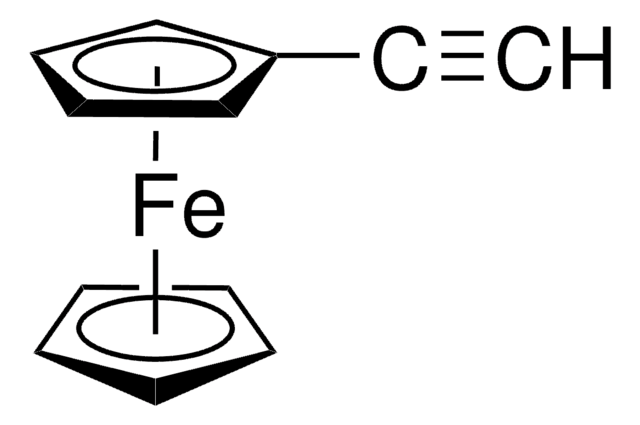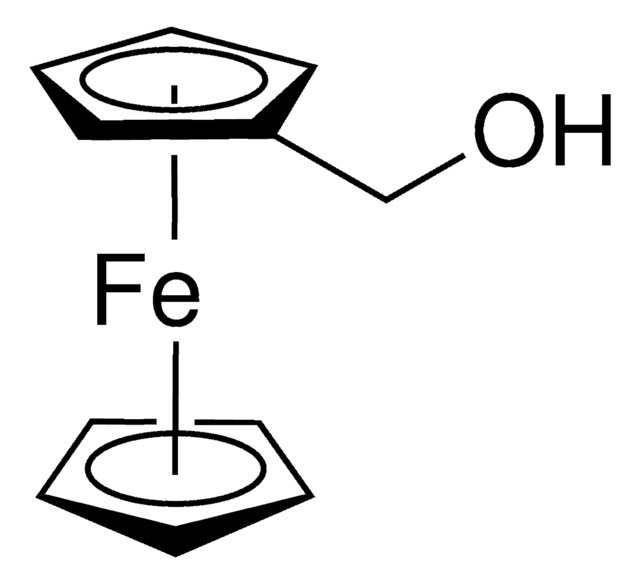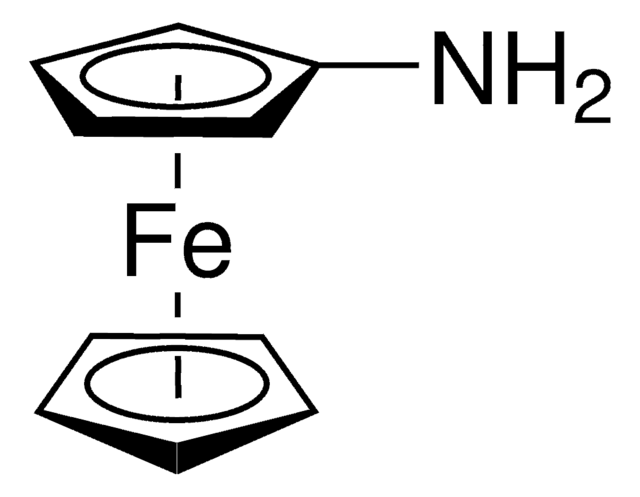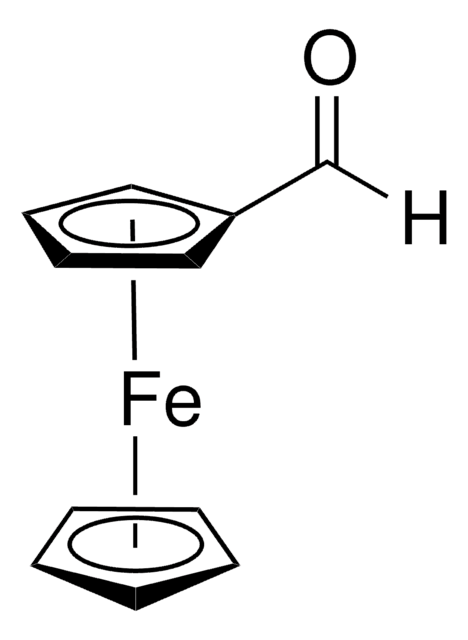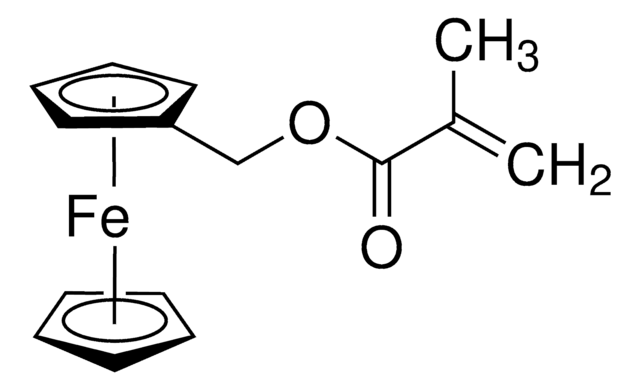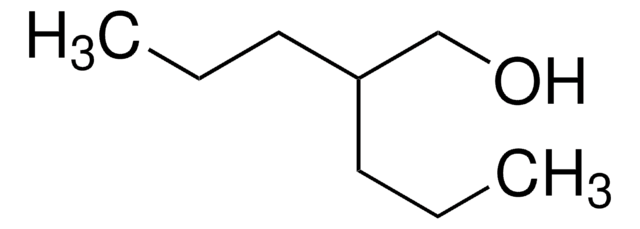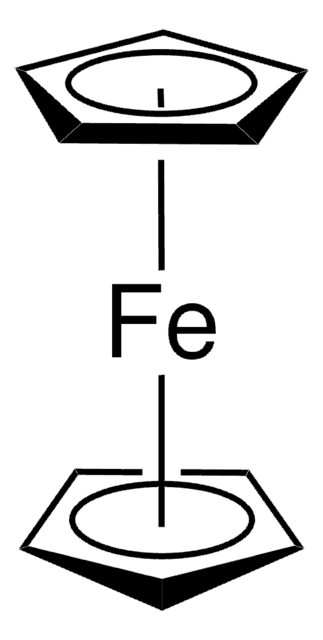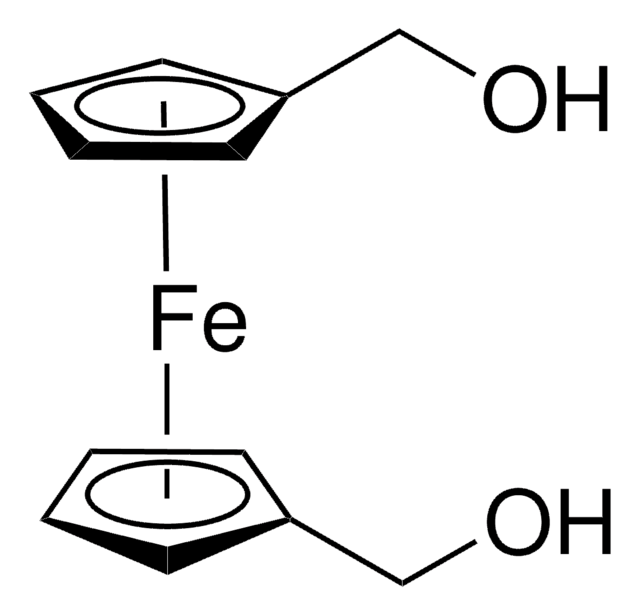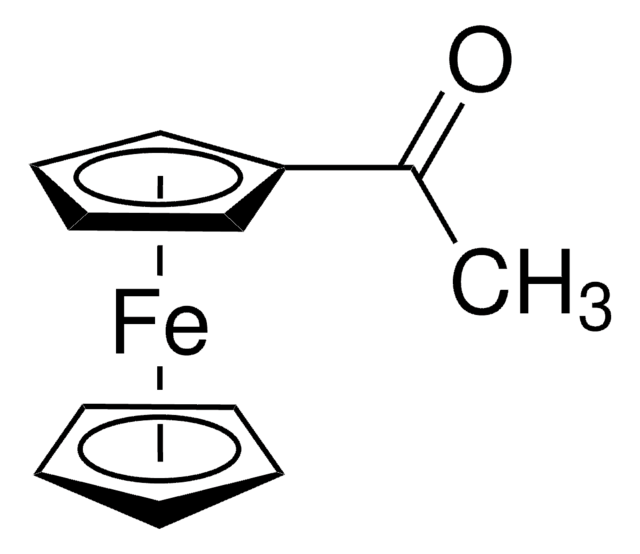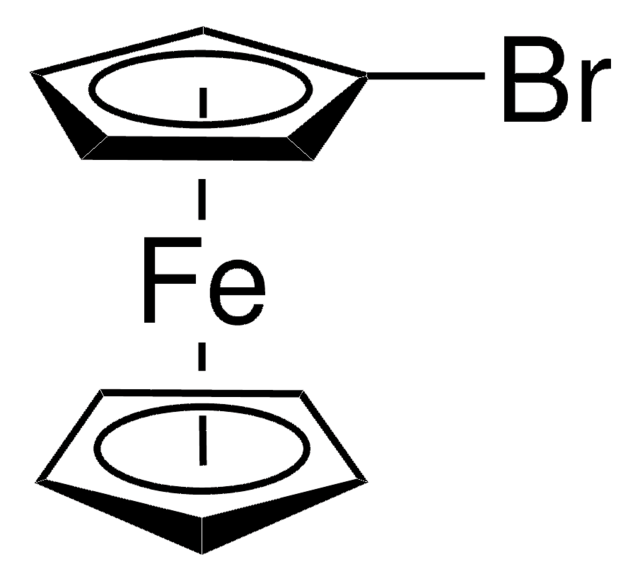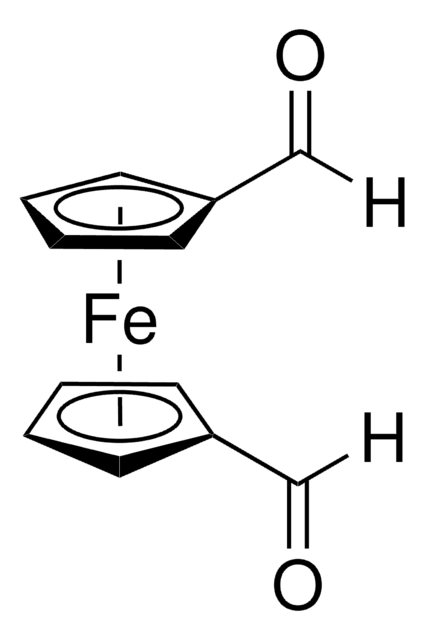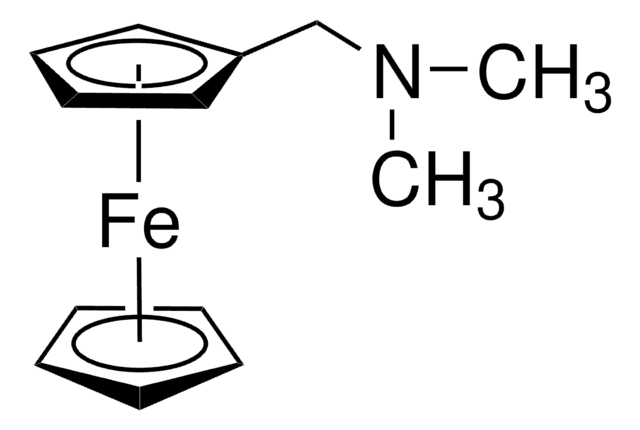All Photos(3)
About This Item
Empirical Formula (Hill Notation):
C12H12Fe
CAS Number:
Molecular Weight:
212.07
EC Number:
MDL number:
UNSPSC Code:
12161600
PubChem Substance ID:
NACRES:
NA.22
Recommended Products
Quality Level
assay
97%
form
solid
reaction suitability
core: iron
reagent type: catalyst
bp
80-85 °C/0.2 mmHg (lit.)
mp
51-53 °C (lit.)
SMILES string
[Fe].[CH]1[CH][CH][CH][CH]1.C=C[C]2[CH][CH][CH][CH]2
InChI
1S/C7H7.C5H5.Fe/c1-2-7-5-3-4-6-7;1-2-4-5-3-1;/h2-6H,1H2;1-5H;
InChI key
LCPVTGDQYVLJHU-UHFFFAOYSA-N
Looking for similar products? Visit Product Comparison Guide
Application
Synthesis of 2-aminomethylferrocenes from vinyl ferrocene and lithium amides.
Choose from one of the most recent versions:
Already Own This Product?
Find documentation for the products that you have recently purchased in the Document Library.
Customers Also Viewed
Atsunori Hiratsuka et al.
Biosensors & bioelectronics, 21(6), 957-964 (2005-11-01)
We propose a new strategy for constructing a mediator-type biosensor as a Bio-MicroElectroMechanical Systems (BioMEMS) application. A vinylferrocene plasma-polymerized film (PPF) was deposited directly onto the surface of an electrode under dry conditions. The resulting redox film was extremely thin
Ceren Kaçar et al.
Analytical and bioanalytical chemistry, 409(11), 2873-2883 (2017-02-12)
Highly sensitive L-lysine enzyme electrodes were constructed by using poly(vinylferrocene)-multiwalled carbon nanotubes-gelatine (PVF/MWCNTs-GEL) and poly(vinylferrocene)-multiwalled carbon nanotubes-gelatine-graphene (PVF/MWCNTs-GEL/GR) composites as sensing interfaces and their performances were evaluated. Lysine oxidase (LO) was immobilized onto the composite modified glassy carbon electrodes (GCE)
Ryoji Kurita et al.
Biosensors & bioelectronics, 20(3), 518-523 (2004-10-21)
This paper proposes a very simple procedure for preparing a biocompatible sensor based on a protein (bovine serum albumin, BSA), enzyme and vinylferrocene (VF) composite membrane modified electrode. The membrane was prepared simply by first casting vinylferrocene and then coating
Joachim Loup et al.
Angewandte Chemie (International ed. in English), 56(45), 14197-14201 (2017-09-19)
Highly enantioselective iron-catalyzed C-H alkylations by inner-sphere C-H activation were accomplished with ample scope. High levels of enantiocontrol proved viable through a novel ligand design that exploits a remote meta-substitution on N-heterocyclic carbenes within a facile ligand-to-ligand H-transfer C-H cleavage.
Tetrahedron, 63, 761-761 (2007)
Our team of scientists has experience in all areas of research including Life Science, Material Science, Chemical Synthesis, Chromatography, Analytical and many others.
Contact Technical Service